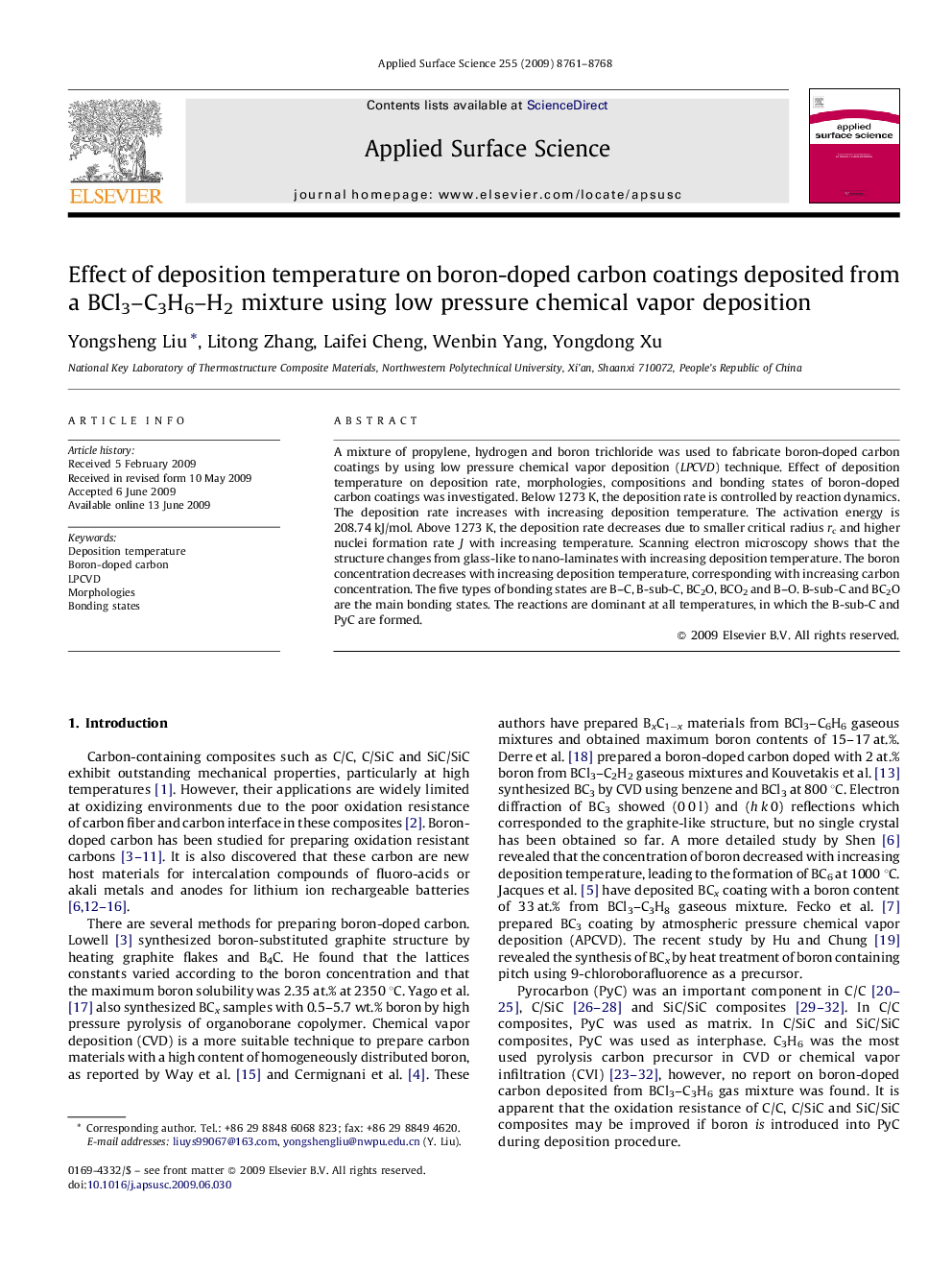| Article ID | Journal | Published Year | Pages | File Type |
|---|---|---|---|---|
| 5359436 | Applied Surface Science | 2009 | 8 Pages |
Abstract
A mixture of propylene, hydrogen and boron trichloride was used to fabricate boron-doped carbon coatings by using low pressure chemical vapor deposition (LPCVD) technique. Effect of deposition temperature on deposition rate, morphologies, compositions and bonding states of boron-doped carbon coatings was investigated. Below 1273Â K, the deposition rate is controlled by reaction dynamics. The deposition rate increases with increasing deposition temperature. The activation energy is 208.74Â kJ/mol. Above 1273Â K, the deposition rate decreases due to smaller critical radius rc and higher nuclei formation rate J with increasing temperature. Scanning electron microscopy shows that the structure changes from glass-like to nano-laminates with increasing deposition temperature. The boron concentration decreases with increasing deposition temperature, corresponding with increasing carbon concentration. The five types of bonding states are B-C, B-sub-C, BC2O, BCO2 and B-O. B-sub-C and BC2O are the main bonding states. The reactions are dominant at all temperatures, in which the B-sub-C and PyC are formed.
Related Topics
Physical Sciences and Engineering
Chemistry
Physical and Theoretical Chemistry
Authors
Yongsheng Liu, Litong Zhang, Laifei Cheng, Wenbin Yang, Yongdong Xu,
